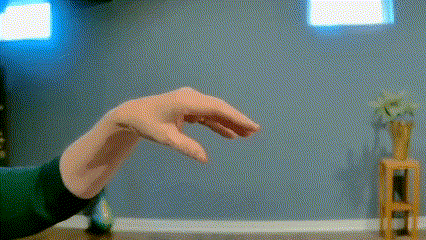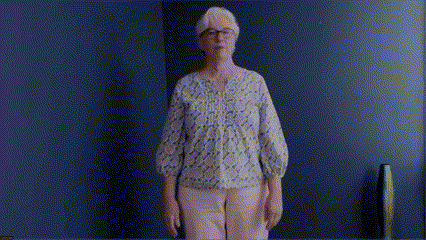Unlocking Your Superpowers: Overcoming the Challenges of Chronic Pain
A Somatic Movement Summit 2023 Interview
Cynthia: I was so pleased to share my experience and wisdom on the fascinating topic of chronic pain at the Somatic Movement Summit 2023, hosted by Lavinia Plonka. As a Feldenkrais practitioner with over 35 years working in wellness and healthcare, I’ve seen firsthand how mindful movement practices can help people reduce pain and reconnect with their bodies.
With chronic pain, there is a gradual loss of anything pleasurable. The world dims. The psyche tightens. We move less and less. Releasing the grip of chronic pain is a process, and yet, it can also happen surprisingly quickly.
While you need to purchase access to the talk to hear it live, I am going to share with you many of the things I was able to share with Lavinia Plonka and the Shift Network listeners.
Let’s begin by exploring the secret keys to overcoming the challenges of chronic pain. From understanding the role of neuroplasticity, creating a safe and respectful space for yourself and slowing down, these superpowers will empower your learning body’s ability to release the grip of pain, regain control through useful movement and live a more fulfilling life.
The MRI or X-Ray Shows Why I Have Pain?
So to start, I know the big question many people have is What causes chronic pain in the first place?
It’s such a complex issue that researchers are continually trying to unravel it. Often, they struggle to find clear correlations between pain and physical findings from MRIs or X-rays.
Here’s what I understand: acute pain alerts us to the fact that something is wrong in the body. But with chronic pain, the brain and nervous system keep sending pain signals for months or years afterward.
In my practice, I’ve seen chronic pain disappear after just one Feldenkrais® session. For others, it takes many sessions or never fully goes away. When quick pain relief happens, I believe some need in the body has finally been answered. Perhaps bones and nerves have more space, or muscles can relax.
So reducing chronic pain requires soothing nerves along with improving physical alignment. It’s a brain and body conversation – and we can change how they communicate through mindful movement.
Research is very clear. The MRI or X-Ray does not show why any of us have pain. 50% or more of people with the same results on an MRI or X-ray are walking around without pain. The cause of pain is more complex than just a test result. It is counterintuitive but it is true.
What is the Role of Neuroplasticity — the brain's ability to rewire itself? How Does it Relate to Chronic Pain?
Neuroplasticity refers to the brain’s capacity to undergo changes in both its physical structure and its functional capabilities. This includes the ability to physically reshape the brain and alter the ways in which messages and chemicals are transmitted within it. Building deep connections and habits is a key aspect of neuroplasticity, as these connections and habits are vital for daily functioning.
A new study shows that changing how people think about the brain’s role in chronic pain can help patients feel better and lessen how bad their pain is.
While habits such as getting out of bed, standing, or tying a shoe are crucial for routine tasks, being overly habitual can reduce the brain’s flexibility and adaptability to different situations. Therefore, it is important to engage in activities that stimulate the brain to form new neural pathways, allowing for increased resiliency and adaptability.
The Brain's Bias Towards Pain Perception
There’s excitement about neuroplasticity’s potential to heal pain. But it has two sides.
The plastic brain gets better at whatever it does more of. So if a pain or danger signal is triggered over and over, the route to labeling similar sensations can become deeply entrenched.
Research confirms this. Nerve cells even “fish” for pain signals when none exist!
Studies on chronic back pain patients are powerful examples. Their body maps get scrambled – they lose awareness of where their own spine is located. Although this may appear inconsequential to some, the implications are significant.
So while neuroplasticity is key for learning and recovery, chronic pain can also exploit it, reshaping our self-image and movement habits.
Key Takeaway:
Neuroplasticity plays a crucial role in chronic pain. The brain is like plastic and gets better at whatever it does more of. When we experience repeated pain signals, they become deeply entrenched in our brain, leading to a distorted sense of our body. By understanding the power of neuroplasticity and the way it shapes our self-image, we can begin to change our perception of pain and break free from its grip.
The good news is that we can harness neuroplasticity through mindful movement to soothe pain pathways and build empowering new patterns.
“We’re changing the brain; we’re using our learning body now as a superpower instead of a villain, so we’re changing that relationship.”
Exploring Neuroplasticity to Unlock Superpowers for Your Body
When we speak of chronic pain, it’s crucial to understand the transformative power of neuroplasticity. Our brain’s incredible ability to reshape itself plays a pivotal role in our perception and experience of persistent discomfort.
The Brain's Bias Towards Pain Perception
Taking care of ourselves, respecting our needs, and slowing down are essential to managing chronic pain. The Feldenkrais Method can help us become more mindful and respectful towards our bodies by focusing on rhythmic movements that help us relax and calm our nervous systems.
I created a whole approach with what I call “Your Learning Body.” There are 7 key principles. Two that I would like to emphasize are:
1. Respecting Yourself
This includes accepting your body’s unique structure and not pushing beyond your “learning edge” into pain or injury. Each of us needs to rediscover this inner wisdom.
The Your Learning Body framework introduces the idea of self-respect in a culture that often values pushing beyond limits. Unlike the idea of “no pain, no gain,” the somatic model encourages less pain and more gain. It focuses on efficiency, effectiveness, and learning through comfort, pleasure, or ease.
“It’s super important to not be scared of finding our own individual learning edge. The Feldenkrais Method helps people calibrate themselves towards better, quality lifelong learning that we can use to allow our lives to not only physically be able to do more and be more comfortable, but emotionally be able to do more and be more comfortable. “
Respecting yourself means recognizing when something isn’t right for you, understanding individual differences, and feeling confident in making choices based on what feels good for you. By prioritizing our well-being over pushing past pain, we can make choices that promote healing and recovery.
2. Slowing Down and Taking Time
Rushing prevents us from sensing subtle signals from our body that could prevent future pain.
In the context of chronic pain, the body remains in a perpetual state of alertness, with ongoing inflammation and heightened stress within the nervous system. This often leads to breath-holding and increased muscular tension in an attempt to maintain stability.
In the Feldenkrais Method, the initial focus is on soothing the nervous system, allowing for flexibility and the ability to self-regulate. Slowing down helps calm the nervous system, reduce inflammation, and increase self-awareness. This approach can lead to improved circulation, enhanced respiration, and a positive shift in overall muscle tone.
Slow, mindful movements cultivate awareness.
Key Takeaway:
Our bodies are constantly learning, adapting, and transferring information. This ongoing process creates habits that can either support or worsen chronic pain. By actively engaging with our learning bodies, we become powerful agents of change. Through mindful movement, slowing down and learning to listen to our bodies, we can develop resilience and promote recovery from chronic pain.
Calming Pain through Mindful Movement Exploration
I presented the two principles of the “Your Learning Body” approach, which are founded on the concepts of respecting yourself and slowing down. Now I’ll guide you through some gentle explorations adapted from the Feldenkrais Method® to experience this directly.
I’d like to now lead you through the Bell Hand, also known as the Jellyfish Hand, a calm and mindful hand movement exercise that draws inspiration from the Feldenkrais Method. This exercise is designed to help soothe the nervous system.
The effect ripples through the whole body. It helps to create a sense of calm and relaxation, helping to reduce stress and anxiety. The exercise can also help to loosen up tight muscles, increase range of motion, reveal tension we carry unconsciously, and teach our hands to gently release.
It can also help to improve posture, balance, and coordination. Additionally, it can help us become more mindful of our movements and habits.
“ We want to calm that nervous system down, give it just a bit of wiggle room, and that will start to improve circulation and muscle tone. “

Jellyfish Hand Movement
A lesson for Calming Your Nervous System
“ Your learning body is your actual superpower. It’s the way we can combat our kryptonite. “
Bringing It Upright with Bones for Life®
Did you know that better alignment of your bones can significantly reduce chronic pain? When your bones are properly aligned, it reduces the load on your muscles and decreases irritation on nerves. This key element of chronic pain management can be achieved through various techniques, like the Bones for Life.
Ruthy Alon created the movement program Bones for Life® with Moshe Feldenkrais’ somatic learning methodology in mind. It focuses on promoting clarity, alignment, and upright posture, particularly emphasizing counter-gravity bone stimulation.
Unlike Feldenkrais, Bones for Life places less emphasis on meditative movements and more on addressing upright posture and ground contact. The program aims to combat bone deterioration through innovative movement patterns and self-correction techniques. By improving muscular organization and learning processes, you can improve your alignment and find relief from pain.
To build this supportive upright sense further, I’d like to introduce you to the bread and butter movement of Bones for Life®, a simple weight-bearing movement technique known as Bouncing on Heels.

Bouncing on heels
A lesson for Better Balance and Upright Health
“ Who are you in the world right now? What is one word that would describe you if you were to walk around this way? “
What a wonderful reminder that, through mindfulness of sensation, we can write a whole new story of empowerment using our body’s superpowers!
Through mindfulness of sensation, I believe anyone can write a new story of empowerment and ease using the body’s superpowers. Old limiting beliefs and trauma need not define how we inhabit ourselves.
Pain Is Inevitable, Suffering Is Optional
As practitioners of the Feldenkrais Method, our role is to guide individuals in consciously recognizing and modifying ingrained movement patterns that no longer serve their well-being.
By introducing conscious awareness, we tap into the potential of neuroplasticity to dismantle unhealthy movement habits linked to chronic pain and facilitate the development of healthier alternatives. Somatic movement education particularly excels in this area, empowering individuals to self-sense and self-correct, providing the brain with essential feedback to break the cycle of pain and align our self-image with our current physical reality.
“ Pain is inevitable; suffering is optional. Those grappling with chronic pain may feel deep despair, but it’s a challenge that can be overcome. Countless individuals have forged new relationships with themselves, and I urge you to seek an approach that fosters self-respect for yourself. And just slow down and take your time. “
Neuroplasticity not only influences chronic pain but also contributes significantly to the healing process. It involves re-educating the brain rather than solely focusing on muscular training or injury repair. This approach grants individuals a greater sense of control over their recovery by understanding the impact of our brain and habits on chronic pain.
Embracing this empowering process fosters a reconnection with our body and a journey of re-education, ultimately restoring individuals’ agency to move and feel better. This embodies the essence of the Feldenkrais Method, turning the impossible into a reality, making the possible effortless, and the effortless graceful.
Conclusion
Living with chronic pain is challenging, but with the right tools and mindset, you can overcome it. Our adult brains can reshape themselves through neuroplasticity, which allows us to form new habits and change how our brains take in and process information.
To combat chronic pain, we must be aware of alternative sensations, practice good alignment, and decrease any excessive muscle tension. It is also key to respect our bodies by slowing down, learning new patterns, and listening to them.
The Feldenkrais Method can help us become more mindful and respectful towards our bodies by focusing on rhythmic movements that help us relax and calm our nervous systems. Finally, activities like Bones for Life encourage us to become aware of our alignment and build our confidence by connecting us to the world.
If you are passionate about delving into the diverse and transformative world of Feldenkrais, we invite you to join our vibrant community at Your Learning BodyTM. Take the first step towards overcoming the challenges of chronic pain by joining us in this journey of discovery and transformation.
What movement wisdom is resonating with you? Or what insights are you integrating? I’d love to hear your key takeaways to keep expanding our learning!
To access this interview from the Somatic Movement Summit 2023, please visit https://somaticmovementsummit.com.

